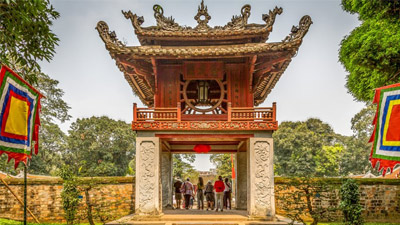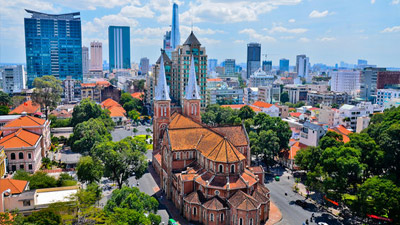Hue's Royal Court Music
 Hue's royal court music is called "Nha Nhac Cung Dinh" (Royal court's refined music) in Vietnamese. It's an old form of art performance that used to official music of royal court for centuries. For a long history of existence, Hue's royal court music has become an essential part of Hue Imperial City as well as Vietnamese culture in general.
Hue's royal court music is called "Nha Nhac Cung Dinh" (Royal court's refined music) in Vietnamese. It's an old form of art performance that used to official music of royal court for centuries. For a long history of existence, Hue's royal court music has become an essential part of Hue Imperial City as well as Vietnamese culture in general.
History of Hue’s royal court music
Hue’s royal court music originated in the reign of Ly Dynasty (1010 -1225) and rapidly developed under Le Dynasty (1427 -1778). At that time, that form of music had fully developed and become official music of the royal court. However, at the end of Le Dynasty, royal court music fell into recession. Till Nguyen Dynasty (1802 – 1945), the Kings brought that kind of music back to its official position. Royal court music had been in golden age and named after the ancient capital city of Nguyen Dynasty: Hue’s royal court music. By 20th century, as the collapse of Nguyen Dynasty and Vietnam War, Hue’s royal court music gradually lost its popularity and was even seriously threatened to the survival.
Feature of Hue’s royal court music
Hue’s royal court music involves two subtypes: “Dai Nhac” and “Tieu Nhac”. “Dai Nhac” played an important role in religious liturgies (like Nam Giao Offering Ritual, Xa Tac Offering Ritual), coronations, funerals, etc. That subtype is featured with a large-scale orchestra of about 40 kinds of drums, wind and string instruments. “Tieu Nhac” has smaller scale and is usually performed in anniversaries, official receptions, royal parties, etc. Musicians in a band of Hue’s royal court music can be males or females. While performing, they have to wear traditional costumes (“ao dai” and “khan xep”) and pay a high concentration on their performance.
Hue’s royal court music is a unique form of art performance that receives high appreciation as its artistic and historical values. In November 2003, Hue’s royal court music was officially proclaimed as an Intangible Cultural Heritage of Humanity by the United Nations Educational, Scientific and Cultural Organization (UNESCO).

Ca Tru Singing
"Ca tru" singing is an old form of singing in the North of Vietnam that originated and flourished in around 15th century. In different regions, "ca tru" singing has different names such as "A dao"...

Vietnam Cai Luong
Cai Luong is a type of performance coming from the South Vietnam and formed from the traditional music of the Mekong River Delta.

Chau Van Singing
"Chau Van" (or "van" singing) is an ancient form of art performance that is featured with religious color. It originated in the Red River Delta of Northern Vietnam in around 16th century and widely...

Cheo Singing
"Cheo" is a traditional form as well as a typical representative of Vietnamese opera beside "Tuong" and "Cai Luong". "Cheo" is a form of art performance that is very popular in the North of Vietnam,...

Then Singing
"Then" singing is a traditional kind of oratorio art in Vietnam. That form of art performance originated form religious activities of Tai, Tay and Nung ethnic groups in Northern Vietnam. The name...

Quan Ho Singing
"Quan Ho" singing is a typical form of Vietnamese folk music that originated in Bac Ninh Province, Vietnam. Over 300 years of existence, that form of art performance has become an essential part of...
Vietnam Travel Guide
- Vietnam Overview
- Vietnam Geography
- Vietnam History
- Vietnam Ecology And Environment
- Vietnam Government And Politics
- Vietnam Economy
- Vietnam Demographics
- Vietnam Customs
- Vietnam Art Performance
- Vietnam Religions
- Vietnam Festivals
- Vietnam Gastronomy
- Get To Vietnam
- Vietnam Travel Tips
- Vietnam Travel Articles & News

 BEST TOURS
BEST TOURS



